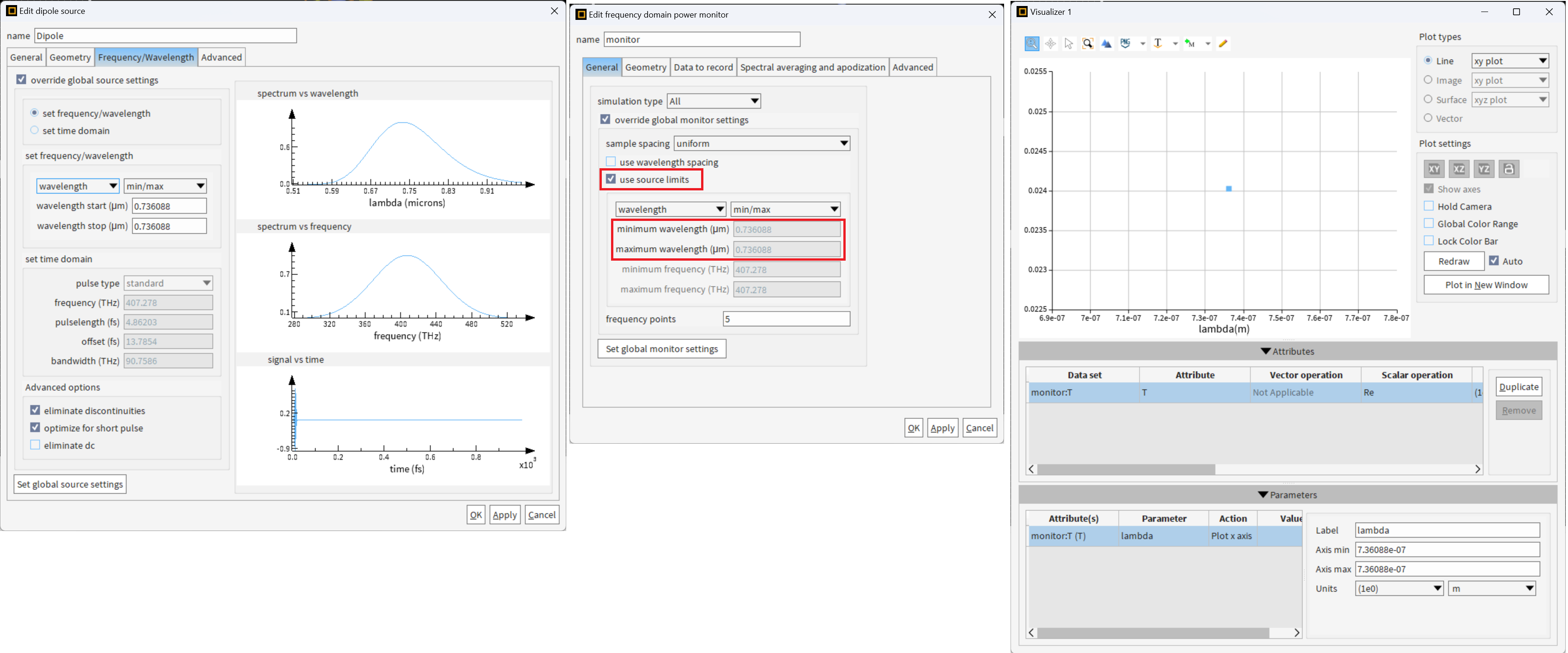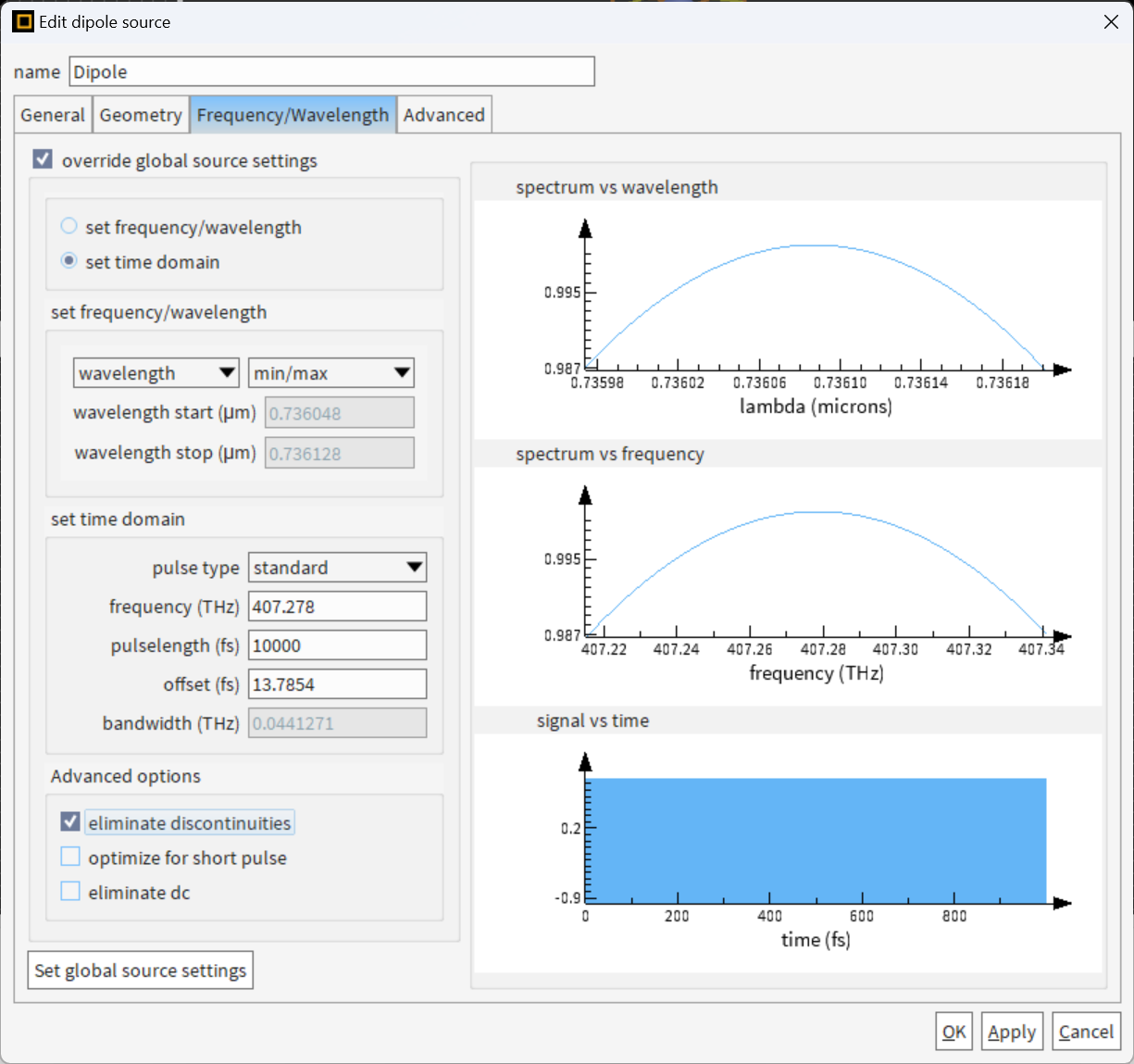-
-
December 4, 2024 at 5:10 am
Term
SubscriberWe are simulating a dipole assuming a single wavelength.
According to the website, “For single frequency simulations, simply set both the min and max wavelengths to the same value.” In reality, a light source with a finite width is inserted.
Assuming a single wavelength of 0.736um as shown in the picture, the spectrum on the wavelength axis on the right of the figure appears to have a FWHM of about 40 nm.
What light source is this actually assuming?
-
December 4, 2024 at 10:24 pm
Kirill
Forum ModeratorDear Subscriber,
In FDTD, since it’s a time-domain method, pulse signals are always used, which means they have a finite width in the frequency domain. This happens even if you set the start and stop wavelengths to the same value.
Usually, this isn’t a problem because the monitors automatically use the source wavelength limits, which filter out the wavelength you’re interested in.

If you really need to narrow the source bandwidth, you can switch to "Set Time Domain" and increase the pulse length a lot. Just keep in mind that this approach usually isn’t ideal because you’ll also need to extend the simulation time to get good results.

Also, check out the page: Changing the source bandwidth in FDTD and MODE – Ansys Optics.
Best regards,
Kirill
-
- You must be logged in to reply to this topic.



-
3367
-
1050
-
1047
-
886
-
837

© 2025 Copyright ANSYS, Inc. All rights reserved.







